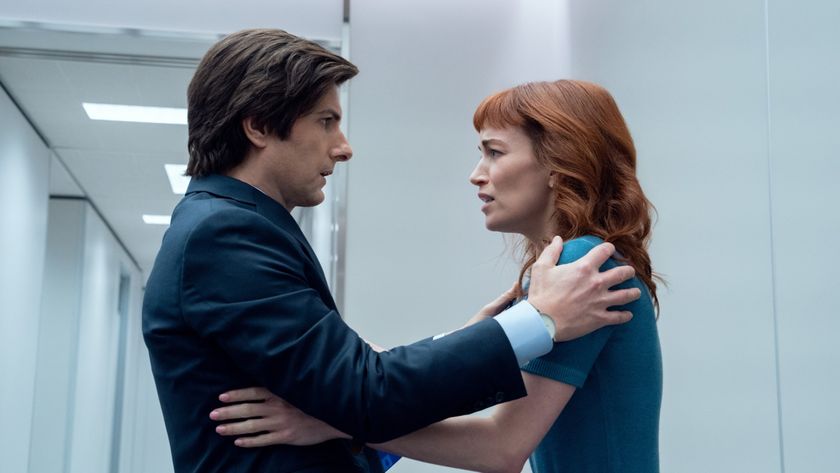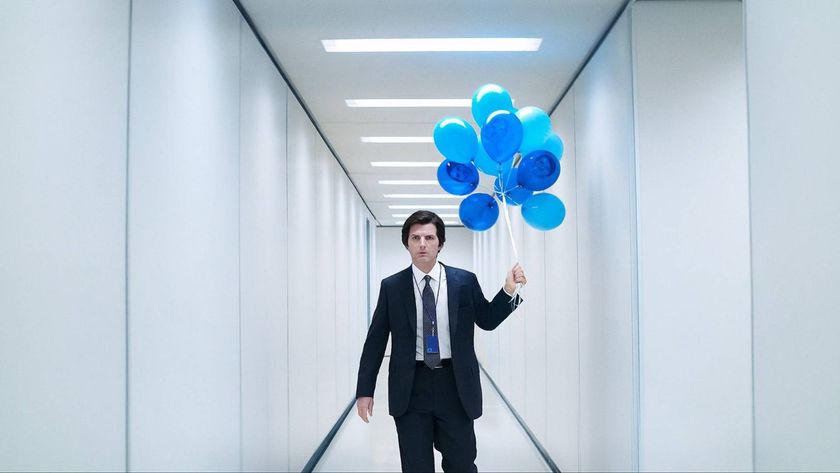We’ve also concentrated on characters who truly have to cope with their disabilities. Losing limbs and having them replaced by superior cyborg parts (the Six Million Dollar Man , various Star Wars characters) is tragic, but the fact that the characters in question can get along pretty much as before (sometimes better) hardly feels like a real struggle against adversity. And yes, Dark Angel fans, we did consider Logan and his wheelchair, and he almost made the cut, but we felt his constant whinging about his situation wasn’t particularly “inspiring”.
So these are our 10 top true heroes, in no particular order (we’re just numbering them so you can keep track on how far you are into the feature)…
Words by: Jayne Nelson (1-7), Neil Ransden (8-10)
1 Gary Bell
Alphas
Disability: Autism
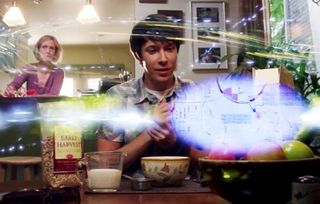
Played with commendable dedication by Ryan Cartwright – it can't be easy to act without looking any of your co-stars in the eye – Gary is the genius at the heart of Syfy show Alphas . He's what the show refers to as a “transducer”, or “human antennae”, which is a fancy way of saying that he can see and feel electrical signals in the air around him and tap into them. This comes in very handy when you need to trace a phone call or use CCTV to find someone. The show's FX team has also come up with some rather lovely effects to show us how he sees, with data streams forming beautiful patterns in the air as Gary plucks at them. Pretty cool.
Of course, some may object to the notion, propagated by films like Rain Man , that all autistic people are geniuses who have what amount to superpowers compared to the rest of the population (Gary's powers are obviously a little more super than most...). There's a similar character in Kiefer Sutherland's new show Touch , a young boy who can interpret numbers and predict the future (again, another acting masterclass from David Mazouz, who can't look anybody in the eye or even speak, except in voiceover mode). While it's true that some autistic people can do extraordinary things, most are merely separated from the rest of us by a condition which locks them into themselves. Many would never function as well as Gary does.
Alphas doesn't shy away from the fact that autism makes sufferers difficult to socialise with: Gary can't relate to people properly, fails to understand certain emotions, and doesn't think about how his words affect people. When it comes down it, though, he's mainly just a computer nerd who's been given powers that transcend his keyboard. Not a bad skill to have.
Read our interview with actor Ryan Cartwright
Sign up to the SFX Newsletter
Get sneak previews, exclusive competitions and details of special events each month!
2 Geordi LaForge
Star Trek: The Next Generation
Disability: Blindness
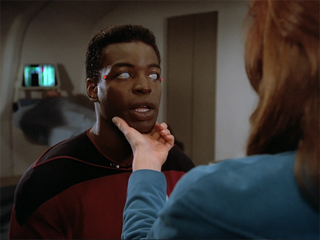
Named after a real-life Star Trek fan named George LaForge, who died from complications of muscular dystrophy in 1975, the Enterprise-D’s Chief Engineer was conspicuous when the show began because he was the only member of the crew without eyes. Not that he didn't have any (he did, albeit all-white ones) but you couldn't see them at all behind his VISOR. This originally caused actor LeVar Burton to worry that he wouldn't be able to perform as well without being able to use his eyes to convey emotion, but he needn't have worried. Once the shock of that metallic hairclip planted over his peepers had worn off, it was actually easy to forget that he wasn't quite like the rest of the crew.
This was because Geordi's blindness was never a big deal on the show; occasionally some naughty bad guy would fiddle with his VISOR, or we'd meet an alternate universe Geordi who could see, or someone like Q would restore his eyesight to prove a point (Geordi asked him to restore his old eyes, on principle). And while the VISOR clearly gave Geordi some form of vision, it didn’t give him 20/20 vision. In that episode when Q gave him sight, Geordi was awestruck by the wonder and beauty of seeing things for real for the first time.
This was a nice idea, furthering Gene Roddenberry's vision of the future as a place where everybody was equal no matter their race, sex, colour or physical abilities... but it was also, sadly, a bit silly. We'd see Dr Crusher regularly performing miracles using 24th-century medical technology but the only thing she could do for Geordi was stick a plastic screen on his face? Not too believable. Still, he got fancy new eyes for the movies, so at least that was a sign medicine moved on during the course of the series. And the fact he wore a VISOR never held him back, even if Burton's own vision was reduced quite considerably during filming due to his eye-prop.
3 Tyrion Lannister
Game Of Thrones
Disability: Dwarfism
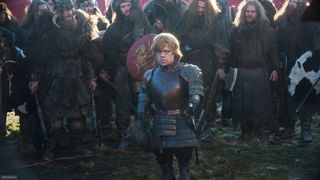
The insults thrown at Tyrion Lannister in both the books and the TV show Game Of Thrones are, sadly, a reflection of what many dwarfs in our real world have to go through (although Tyrion, being a contrary sort, takes one of these insults – “Imp” – and makes it his own). And so there's a lot to be said for the fact that Tyrion has emerged to become the most popular character in the series, with Peter Dinklage deservedly nabbing an Emmy Award and a Golden Globe for his performance in season one of HBO's show.
Focusing mainly on the TV series here in case you haven't read the books (no spoilers!), Tyrion has become the breakout character for two reasons. Firstly, his size, which automatically sets him apart from the rest of the cast... and pretty much everybody else on television, too. There's not much serious work out there for actors like Dinklage, with only a lucky few (Warwick Davis is the best example) getting enough work and recognition to make a mark.
After a career spent steadfastly refusing to play roles that he thinks are demeaning to dwarfs (you can read him discussing this, and other things, in this excellent New York Times interview , Dinklage hit the motherlode with Game Of Thrones thanks to the fact that Tyrion is a fantastic character first and a dwarf second.
Of course his size is an important part of what makes him Tyrion, but he's so much more: clever, sardonic, scheming, sexy and vulnerable. Tyrion is not “just” a dwarf: he's one of the best characters on TV right now. And it's made Dinklage a star. “They’re somewhat expecting Tyrion, you know?” he says, about attending fan events for the show. “I mean, they like me, but they just kind of want me to say my favourite lines and stuff... He’s a great character to hide behind. He’s a large personality.”
4 Toothless and Hiccup
How To Train Your Dragon
Disability: Broken tail/amputee
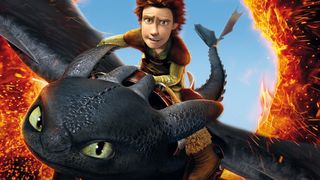
There's a rather lovely mirroring thing going on in How To Train Your Dragon , even though it doesn't quite pay off until the end of the film (very slight spoilers ahead, but only small ’uns). The story follows young Viking Hiccup, who stumbles across an injured dragon he names Toothless. The reptile can no longer fly properly thanks to a damaged tail – which works as a stabiliser as he flies – and therefore he's doomed to either a long, lingering death from starvation or a much quicker, more gruesome one at the hands of Hiccup's violent Viking family.
Hiccup, being a nice sort of Viking, decides he can help his unusual friend, and builds a prosthetic tail support to help him fly. We're not sure if this is the very first example of dragon limb-replacement in history, but it forges a bond between the two. And, as is the way with these kinds of stories going back into antiquity (remember Androcles and the lion?), Hiccup's kindness is repaid as Toothless helps to save his village from a Very Nasty Dragon.
It's then that the film does that mirroring thing we mentioned, because during the final battle with the Very Nasty Dragon, Hiccup loses his leg and wakes up to find he's wearing a prosthetic limb himself. He takes his new disability completely in his stride (no pun intended) and by the end credits is already wondering what he can do to make his new leg more awesome – a great example to set to kids who might have never thought about what it means to need a prosthetic.
5 Regional Bureau Chief Gordon Cole
Twin Peaks
Disability: Deafness
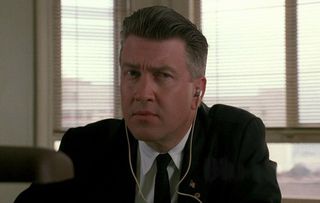
We really don't have much to say about David Lynch's VERY LOUD cameo appearances in Twin Peaks except that you should probably watch them. He's an FBI head who's VERY DEAF AND SHOUTS A LOT, as we discover when we first meet him in this scene...
...and this is true right up until he meets the waitress Shelly Johnson, who has a voice he can actually hear, much to his amazement:
Utterly ludicrous, of course, but Gordon Cole is so beautifully bonkers you don't mind getting an earful from him. And hell, he’s a deaf FBI boss – that’s a triumph over adversity by anybody’s standards.
6 Venom
The Guild
Disability: Paraplegia
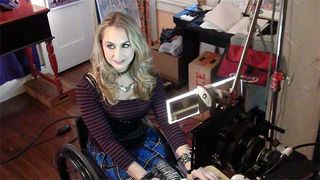
Fans of Felicia Day's web series The Guild will already know that recurring character Venom is like nobody else on this list. First off, she's really, horribly, boo-hiss evil: a member of the rival Axis Of Anarchy group who make our heroes' lives a misery. When we first meet the wheelchair-bound gamer, played by real-life paraplegic Teal Sherer, she queue-jumps the line for the new game extension pack and, when confronted by The Knights Of Good – led by Vork (Jeff Lewis) – pretends that he was shoving her wheelchair and abusing her in order to gain sympathy.
Clearly this is a woman who will use her disability to get her what she wants. She's also got an acid tongue (“If you talk to me again, I'll cut myself where I can't feel anything, and bleed out all over the concrete!”) and, in one scene, seemed to take a rather disturbing amount of pleasure when her game character dies (we're not quite talking a When Harry Met Sally reaction, but there was potential...).
Hell, maybe we shouldn’t be calling such a character “inspirational” (we’re certainly not recommending her as a role model) but you can’t deny she’s a great, strong portrayal of a disabled character, and anyway, it’d be insulting if all portrayals of disabled characters were glowingly positive.
The fact that Venom says and does outrageous things that would make some politically correct viewers faint away in shock is what makes her so brilliant, and it's not just down to The Guild 's scripts. Sherer, who lost the use of her legs after a car crash at 14, has recently written a sardonic comedy series called My Gimpy Life which follows her career as an actress in a wheelchair (trailer here : it co-stars Felicia Day). The fact she's made such an impact on The Guild , despite being a smaller character, says a lot for her charisma. Although we're not sure we'd actually ever want to meet Venom herself, because she's really quite terrifying. Check her out in this episode (from 3mins 20 secs)...
7 Miles Vorkosigan
The Vorkosigan Saga
Disability: Skeletal deformities, brittle bones
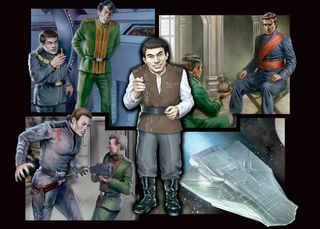
Lois McMaster Bujold created one hell of a character when she wrote The Warrior's Apprentice in 1986 – one who has gone on to star in a saga now spanning 13 books and novellas. Miles Vorkosigan is proof that even the most unfortunate of beginnings can be overcome, and you can't get more unfortunate than being poisoned by deadly soltoxin gas before you're even born...
Thanks to the gas and the treatment used to save his mother's life, Vorkosigan was left with terrible bone deformities and had to be removed from his mother's womb at only five months. Placed in a special incubator, the unlucky baby was then kidnapped before being recovered and released from the incubator at ten months. Unfortunately he then required years of treatment for his fragile bones and ended up being unable to walk until he was four, growing to a mere 4ft 9in as an adult, and in later years – after an incident involving a clone of himself too complicated to retell here – he wound up with seizures that occur when he's stressed.
Not that any of this held him back. Vorkosigan used his physical frailty as a source of anger, at first outraged and sometimes prompted to suicidal actions before becoming a kick-ass military commander and channelling his issues into the kinds of adventures and deeds of derring-do that only true heroes can provide. Bujold has said in interviews that Vorkosigan's adventures were loosely based on Horatio Hornblower, among others, and that might explain why the Vorkosigan saga is such a breathless headrush.
(Ironically, while we were looking for images with which to illustrate this entry, we discovered that very few of the books covers actually feature Miles – the image we've used is from a Steve Jackson role-playing game – which is a sad comment on what publishers think is sellable.)
8 Barbara Gordon/Oracle
Batman
Disability: Paraplegia
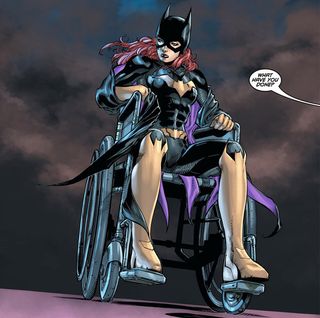
Barbara Gordon, daughter of Gotham City’s police commissioner Jim Gordon, was introduced to Detective Comics and the Batman TV show in the ’60s as Batgirl, a female counterpart to Batman and Robin.
As well as being a costumed crime fighter, Barbara was head of Gotham City Public Library, a genius with a computer, and later was elected to the US Congress. She quickly became incredibly popular with fans, and thanks to reader requests she appeared in other titles, including Superman and Justice League of America, fighting villains as Batgirl.
But the event that left her wheelchair-bound occurred in her own home, in Alan Moore’s infamous tale The Killing Joke : the Joker ambushes Barbara, shooting her through the spine, in one of the Batman universe’s seminal moments.
Angered at the casual crippling of the character, effectively just as a plot device (Joker trying to drive Jim Gordon insane), writers Kim Yale and John Ostrander decided to turn her into Oracle rather than let her fade into obscurity.
As Oracle, Barbara proved an invaluable ally to Batman and other heroes, her ability with computers and her global espionage network combining to make her practically all-knowing. Later she became leader of her own superheroine group Birds of Prey, working out of Gotham, Metropolis, and eventually California.
The fact that Barbara continued fighting crime from her wheelchair has made her a much-loved and unique character, as well as something of a role model. The Superhero Book: The Ultimate Encyclopaedia Of Comic-Book Icons And Hollywood Heroes (2004) declares, “Gordon stands tall as the most empowering disabled superhero. Readers witnessed her tragedy, and watched her rise above it.”
She has also been the centre of debate over whether or not her character should remain in a wheelchair in a universe where people can recover from practically any injury, up to and including death. Is restoring her mobility disrespectful to the fans, or is keeping her paraplegic actually defining her by her disability?
In June 2011 DC made a controversial decision as part of the New 52 reboots: Batgirl #1 joins a young Barbara three years after the Joker’s attack, fresh from a “miraculous” recovery and once more donning the batgirl costume.
As you can imagine, responses were mixed.
9 Professor Xavier
The X-Men
Disability: Paraplegia
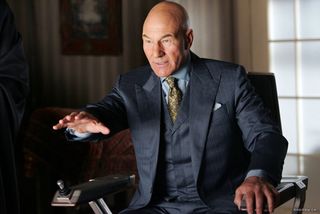
Charles Xavier – genius, civil rights activist and powerful mutant – is leader of the X-Men, first appearing in Marvel comics in X-Men #1 (naturally) in 1963.
Xavier is regarded as the Martin Luther King of the Marvel universe, known globally and respected by many governments and agencies for his intelligence and dedication to peaceful resolutions.
As a young man Charles travelled extensively, meeting mutants he would later recruit, falling in love (several times) and generally stopping evil. In the standard Marvel history, during these travels, Charles stops the alien scout Lucifer from starting an invasion of Earth; in retaliation, Lucifer drops a stone block on his legs, leaving him wheelchair-bound.
As is often the case, the Ultimate line of comics took a less out-there approach to the story: Erik Lensherr (later Magneto) and Xavier fall out over the best way to keep young mutants safe, engaging in an abilities-driven brawl, during which Lensherr spears Xavier with a metal shard.
However it happened, being paraplegic has never held the Professor back. He’s one of the most powerful mutants in the world, one of the few who can match Magneto, and the very reason the leader of the Brotherhood of Mutants wears that iconic helmet.
As the founder of Xavier’s School for Gifted Youngsters, he has gathered and protected vulnerable children with mutant genes, and is able to be there for them with advice and guidance constantly thanks to his psychic abilities. He does have a darker side too: at times he’s been forced to manipulate his students, lie to them, and alter feelings and memories. The strength of his guilt over such episodes makes it clear that he is a genuinely good guy though.
Thanks in part to Patrick Stewart’s performances in the X-wheelchair, Professor Xavier remains one of the best-known X-Men, and his philosophy of acceptance gives the comics their most important message.
10 Matt Murdoch
Daredevil
Disability: Blindness
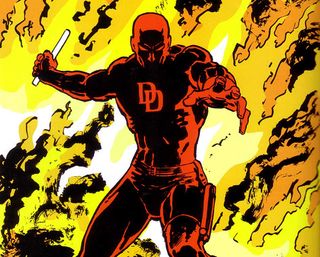
Matt Murdoch is the red-suited Marvel hero Daredevil, whose superpowers derive from the same accident which blinded him as a young boy.
Murdoch’s father was “Battling Jack” Murdoch, a boxer who was tied up with organised crime in New York City. Living in the poverty-afflicted Hell’s Kitchen, Matt’s father was eager to keep his son away from the criminal element he himself had fallen in with, and constantly pushed him to study. Matt did so, and was sarcastically labelled “daredevil” by other kids for his refusal to do things with them, instead studying or secretly working out at his father’s gym.
Jack also instilled in his son the importance of doing good, and this came to the fore when Matt saved a blind man from being knocked down by a truck carrying radioactive waste. However, the truck spilled its cargo and Matt was blinded, left with four senses which were heightened to superhuman levels.
Stan Lee explained that Murdoch’s senses were altered by the radiation, and his inner ear, responsible for balance, is preternaturally developed, making Daredevil one of the most agile heroes out there. His advanced senses of touch, taste, hearing and smell combine to give him a “radar sense”, giving him a considerable edge in some situations but a weakness in others. Comics legend Frank Miller took over the writing on Daredevil in 1979, and made an effort to make the character’s powers more believable: the “radar” was toned down, and Daredevil became vulnerable to loud noises and strong smells.
On what attracted him to the character, Miller says, “How many superheroes are known for that they can’t do? Daredevil’s distinguishing feature is that he can’t see…I fell in love.” He admires Matt for being a flawed hero – angry, out for revenge – but goes on, “Somehow this guy redeems himself and moves ahead…he just doesn’t give up.”
Matt Murdoch’s had a rough time: aside from the accident that blinded him his father was murdered by the Kingpin for refusing to throw a fight, his girlfriend Elektra joined the “dark side”. Under Miller the Daredevil tales became gritty, brutal and more realistic.
As a civilian, Murdoch is a renowned lawyer with an encyclopaedic knowledge of statutes, and a skilled detective. On taking over the comic, Miller stripped it back to what he thought were the things that really worked: “The winning idea was getting rid of the costume, for a good long time. And you realise the hero wasn’t the costume; the costume was just dressing around the hero.”
SFX Magazine is the world's number one sci-fi, fantasy, and horror magazine published by Future PLC. Established in 1995, SFX Magazine prides itself on writing for its fans, welcoming geeks, collectors, and aficionados into its readership for over 25 years. Covering films, TV shows, books, comics, games, merch, and more, SFX Magazine is published every month. If you love it, chances are we do too and you'll find it in SFX.
Most Popular





